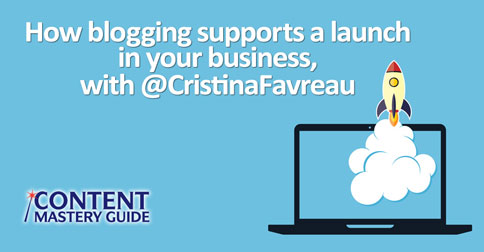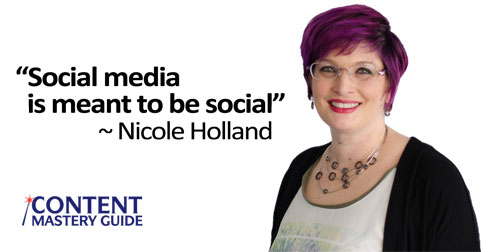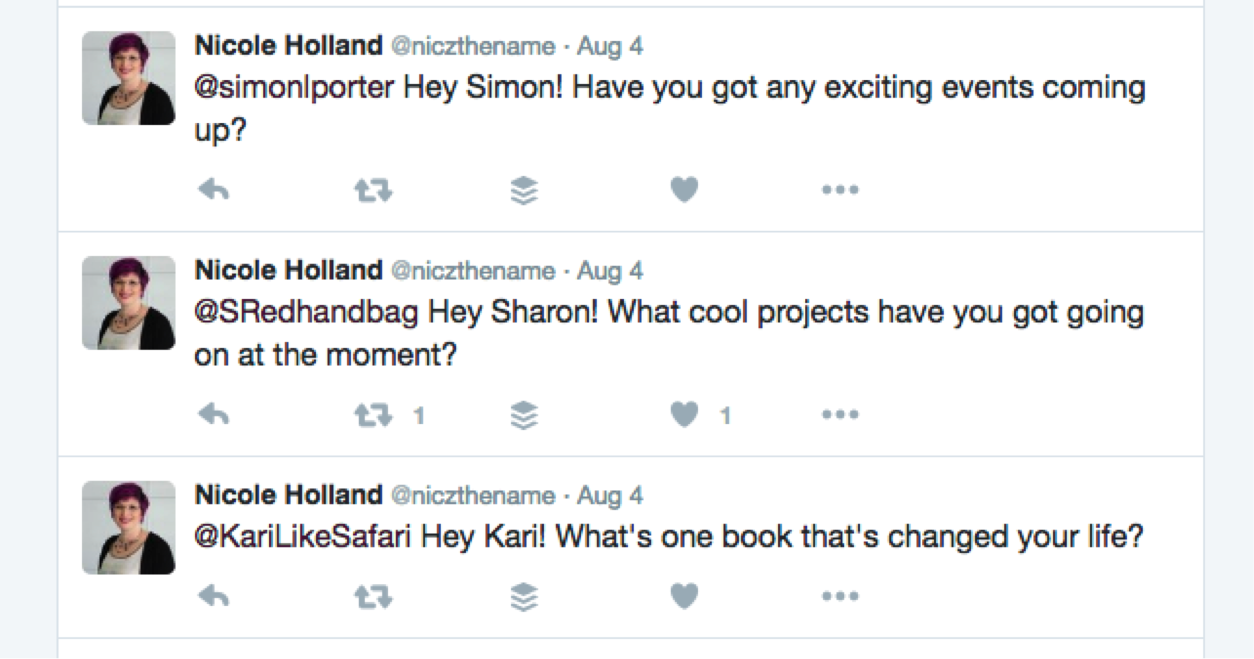
I hear many people talk about how September feels like a new beginning in their life and in their business. And the launch of a new season often comes with the launch of something they haven’t done before in their business.
When you’re already so busy with a launch, where does blogging fit in? It’s often the first thing to go on the back burner, but you may not realize all the ways blogging can help make your launch a success.
To delve into this topic, we’ll hear from Cristina Favreau, the Launch Geek. Cristina and I met online and worked together many years ago, and have launched and relaunched many things in our businesses since then.
Today, she’s in the business of launching stuff online – courses, products and programs, events, businesses, membership sites, podcasts, blogs, you name it, she’ll help you launch it! Best of all, she helps you come up with a launch plan that fits YOU – your product or service, your personality, and your level of technical know-how.
How does a blog enhance your credibility during a launch, and how might that affect your results?
I know this is a given, but it’s important to point out that launching is not the time to start BUILDING credibility. You build credibility, over time, through your articles and blog marketing activities.
During a launch, your blog will help you achieve a few goals (depending on your situation):
- Building your launch interest list
- Creating curiosity, anticipation, buzz for what’s coming
- Improving keyword rank
- Demonstrating social proof
- Attracting media or guest opportunities
While all of these elements are important, in my opinion building your interest list is the most important goal to work toward.
That way you’ll have a list of interested people (AKA a warm list) to send launch promo emails (versus sending a barrage of launch emails to your entire list for the duration of your launch).
What shape should your blog be in before you launch?
Because every blog and each launch is different, there’s not one right answer.
I advocate for starting where you are with what you have (“shoulds” just make everything more intimidating).
There are, however a few best practices to consider. I’ll also share some of my suggestions, based on my experience.
First and foremost, no matter how long you’ve been blogging, the most important factor of launching is PLANNING!
I know, I know! Planning isn’t sexy.
I’m sure you have better things to do than create an elaborate launch campaign. So don’t. Create a simple one.
Creating a simple launch plan will give you a clear picture of what blog elements are needed to support your launch (which may affect your timeline and/or budget).
Here are elements to include in your simple launch plan:
- Important dates (open cart, close cart, teaser period, pre-launch phase, content release, live/virtual events, bonus release, program start/end, etc.)
- Tasks to complete, when and by whom
- Teaser, pre-launch and launch content plan
- Visibility/promotion strategy for each piece of content
- Teaser, pre-launch and launch email strategy
- 2-3 launch goals and a way to track them
Your blog plays an important role in each of these elements, but especially during the teaser period (3-6 weeks before pre-launch) and pre-launch phase (5-10 days before you open the cart) where you “prime” your audience for what’s coming up.
Here’s a suggested blog strategy for the teaser period and pre-launch phase:
Write a weekly blog post (or more, depending on your schedule), only about your product/program topic
- Create a freebie that is directly related to your product/program topic
- Link to that freebie in each blog post
- Send a link to each blog post to your entire email list
- If you’re planning a launch a few months in advance, share “behind the scenes” of your upcoming launch (people love getting the inside scoop)
Keep in mind that during the teaser period, discuss the TOPIC of your product or program; don’t mention the product or program you’re about to launch (not just yet).
What are the top 3 ways that blogging can support the launch of…
An online business:
- SEO and keyword ranking
- Builds your list
- Gets backlinks and shares (links, post excerpts, quotables, shareables, e.g., Click To Tweet)
An in-person event:
- Your audience sees you being active in your industry (even if they can’t make the event)
- Acts as your virtual business card where people can learn more about you after the event
- Gets backlinks and shares (links, post excerpts, quotables, shareables, e.g., Click To Tweet)
A virtual event (telesummit or webinar):
- Demonstrates your industry connections and expert status by association (interview your event speakers)
- Gets backlinks and shares (links, post excerpts, quotables, shareables, e.g., Click To Tweet)
- Offers added value for event participants (convert presentation transcripts and Q&A into blog posts)
A recurring podcast, blog or newsletter:
- Offers added value and alternative learning methods (post transcripts of audio and other content upgrades like worksheets and PDF reports)
- Adds SEO value when you turn audio into text transcripts
- Interviews mean more and content for you and potential exposure to the other person’s audience)
A book or other information product:
- Gets backlinks and shares (links, post excerpts, quotables, shareables, e.g., Click To Tweet)
- Creates buzz with free chapters and other book excerpts
- Generates content for your book or info product
A course or training program:
- Demonstrates that your program works (blog about success stories/case studies of students)
- Gives people value while they wait for the course to start
- Generates interest in the program with “behind the scenes” posts as you create your program
A membership site:
- Attracts new members with a sneak peek of course content
- Provides subtle ways to mention your membership site
- Demonstrates value of site when you write profiles of member success stories
Wow, if I wasn’t already a blogging evangelist, I would be now! Thanks, Cristina, for showing us how integral blogging can be when you’re launching anything in your business.
P.S. If you liked this post, you might enjoy the Blogging Tips newsletter, delivered weekly to your inbox! Sign up here.




